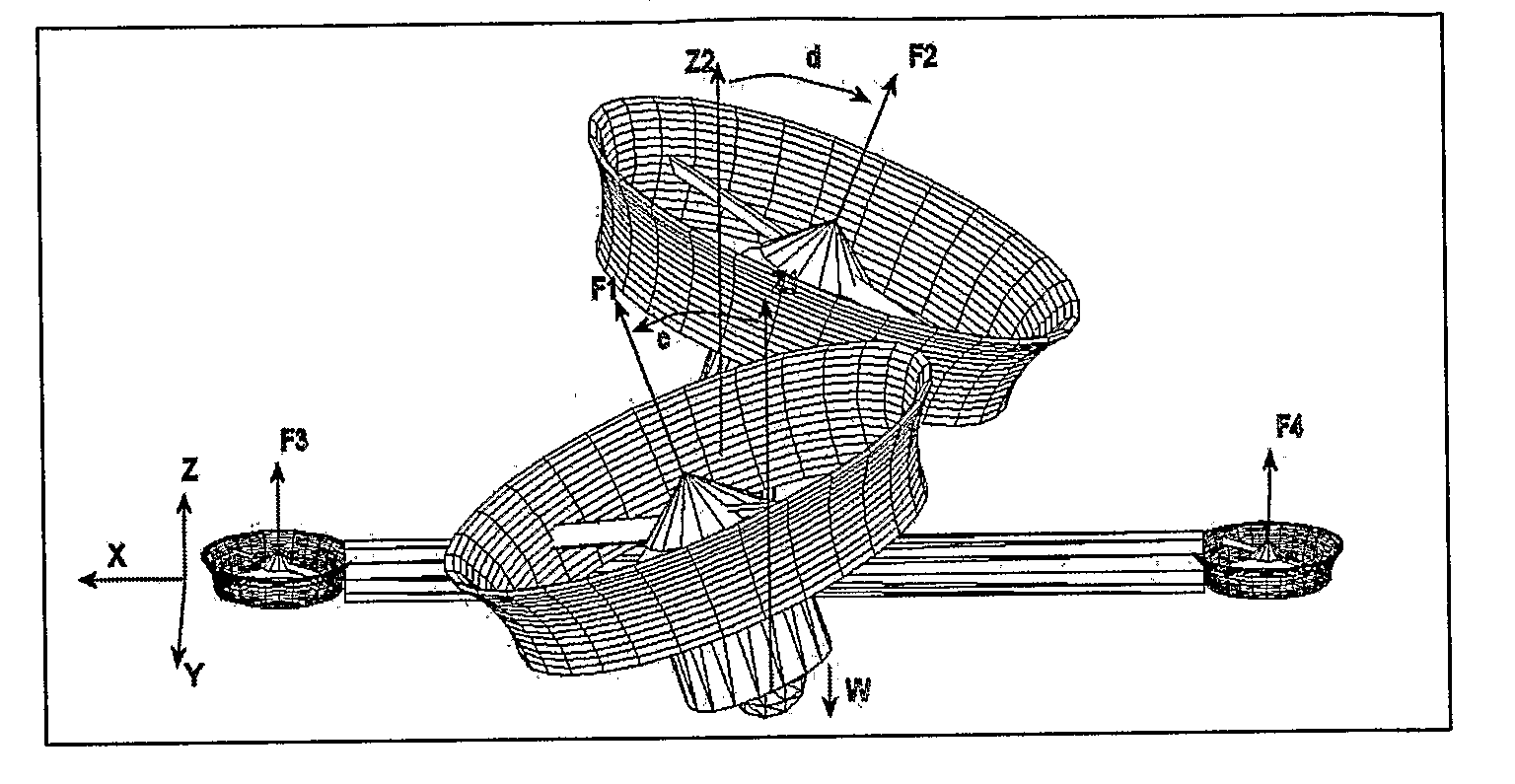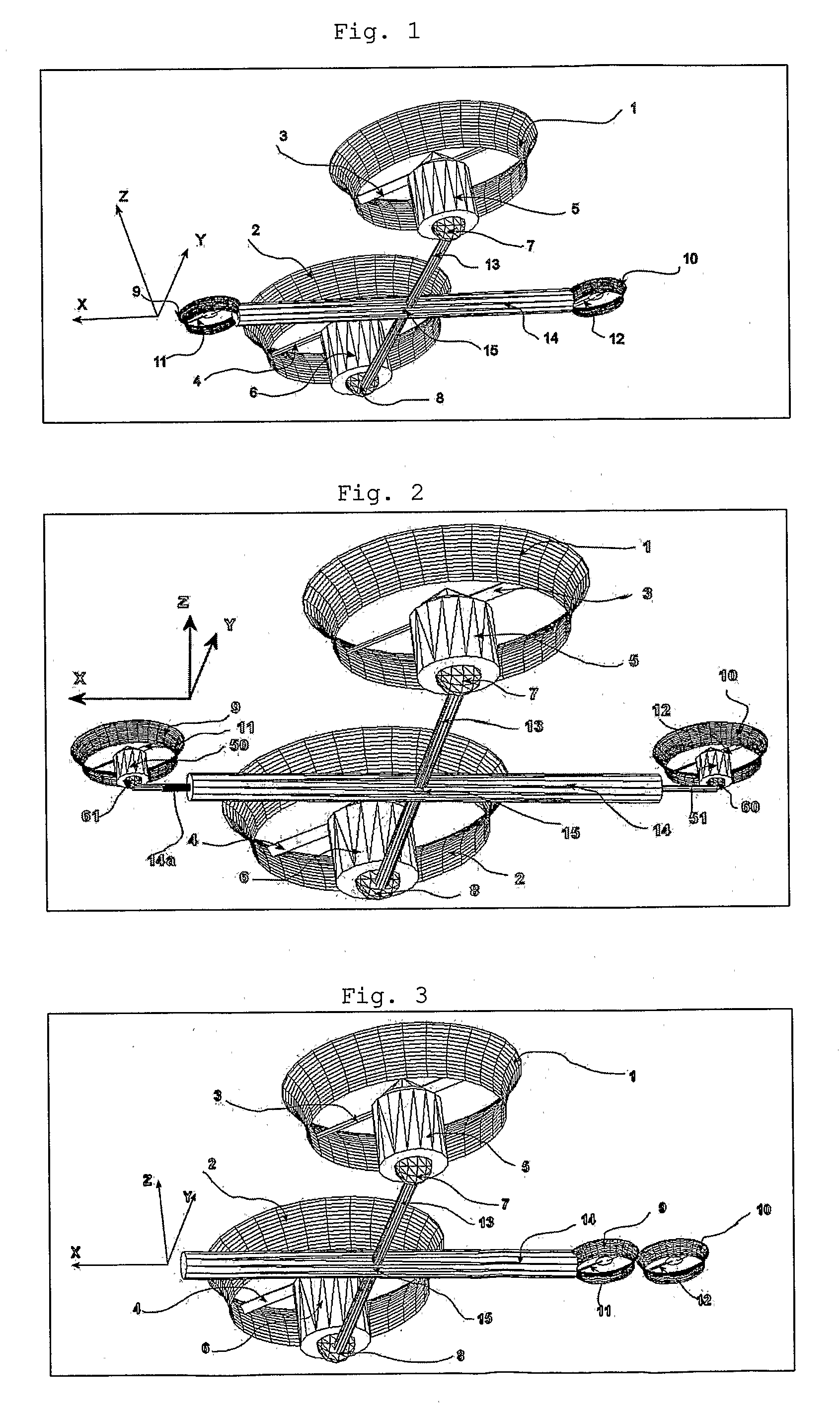System and Process of Vector Propulsion with Independent Control of Three Translation and Three Rotation Axis
a vector propulsion and independent control technology, applied in the field of system and process of vector propulsion, can solve the problems of difficult control of take off and landing, difficult control of the transition phase from horizontal to vertical flight, and never used configurations in commercial aircraft, and achieve the effect of simple independent control and complicated independent control of pitch and roll angles
- Summary
- Abstract
- Description
- Claims
- Application Information
AI Technical Summary
Benefits of technology
Problems solved by technology
Method used
Image
Examples
Embodiment Construction
[0103]In the preferred embodiment, the present invention comprises two thrusters designated as main thrusters, that are independently moved (by any kind of engine) and are counter rotated, and which are placed laterally in the aircraft, with independent thrust variation or RPM variation or propellers pitch change (they can however be synchronized), being tiltable around two axis, positioned in such a way that their resultant thrust force, in all the possible configurations of the aircraft (take off, landing and horizontal flight), passes at or in close vicinity of the Cg, in the event of equal tilt and equal RPM or propellers pitch angle. There are also provided two thrusters or propellers (moved by any kind of engine) counter rotated, with independent control of thrust or RPM or propellers pitch change (they can however be synchronized), placed at the front and at the rear of the aircraft, these being fixed (not tiltable). In other variation of this embodiment these auxiliary thrus...
PUM
 Login to View More
Login to View More Abstract
Description
Claims
Application Information
 Login to View More
Login to View More - R&D
- Intellectual Property
- Life Sciences
- Materials
- Tech Scout
- Unparalleled Data Quality
- Higher Quality Content
- 60% Fewer Hallucinations
Browse by: Latest US Patents, China's latest patents, Technical Efficacy Thesaurus, Application Domain, Technology Topic, Popular Technical Reports.
© 2025 PatSnap. All rights reserved.Legal|Privacy policy|Modern Slavery Act Transparency Statement|Sitemap|About US| Contact US: help@patsnap.com



